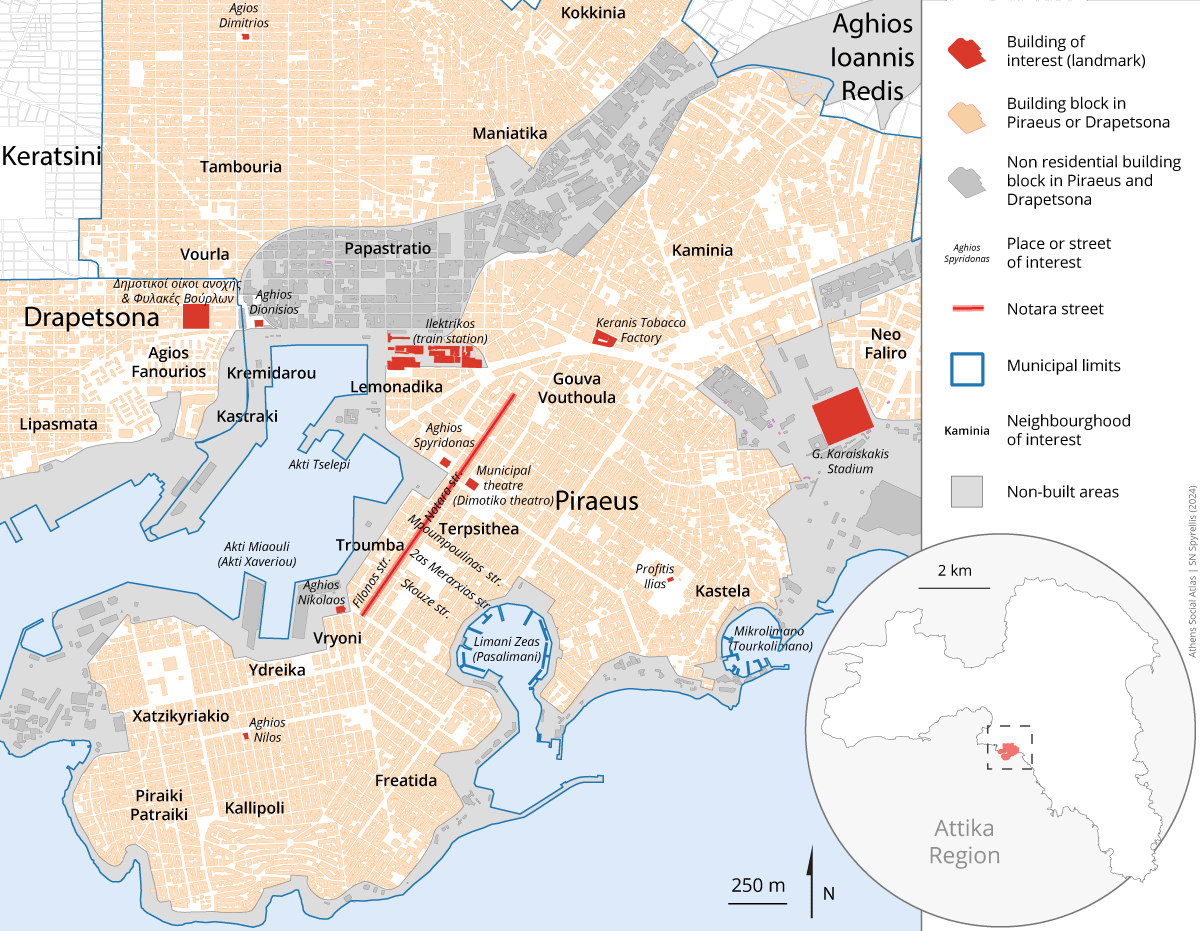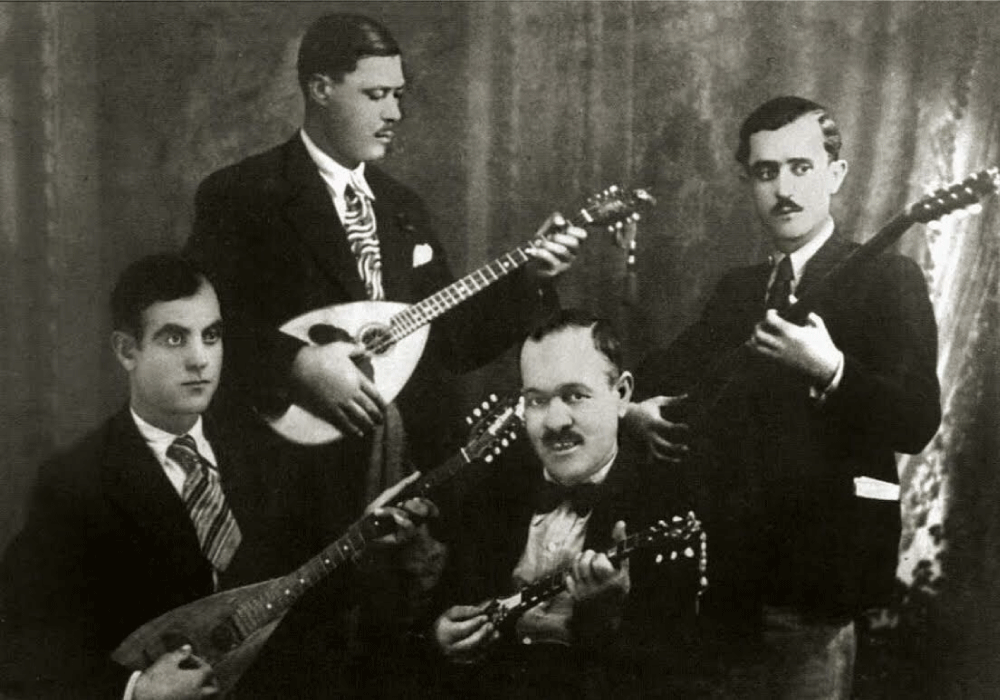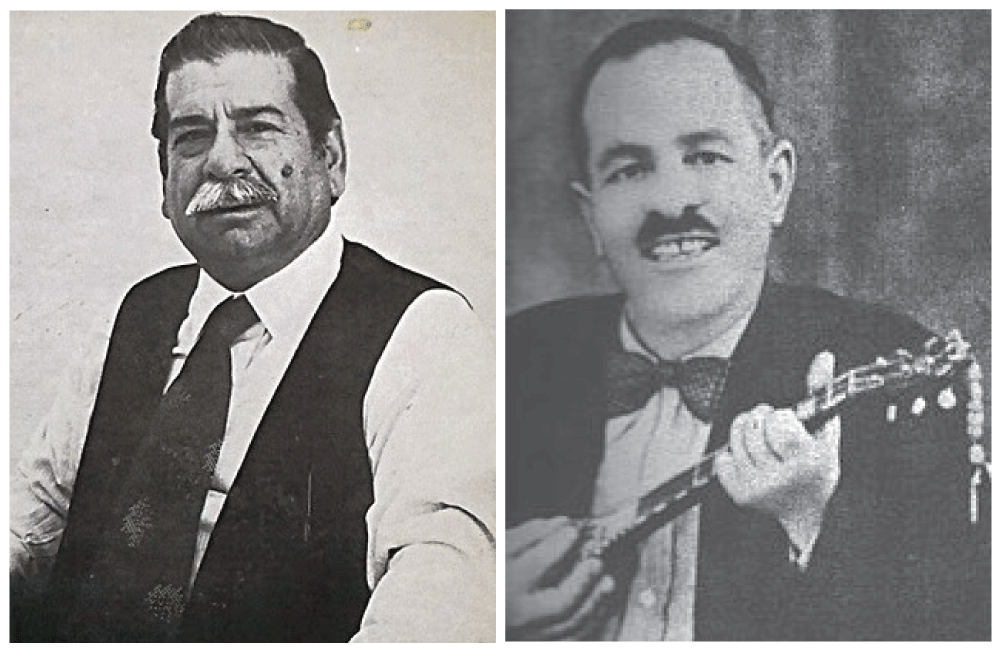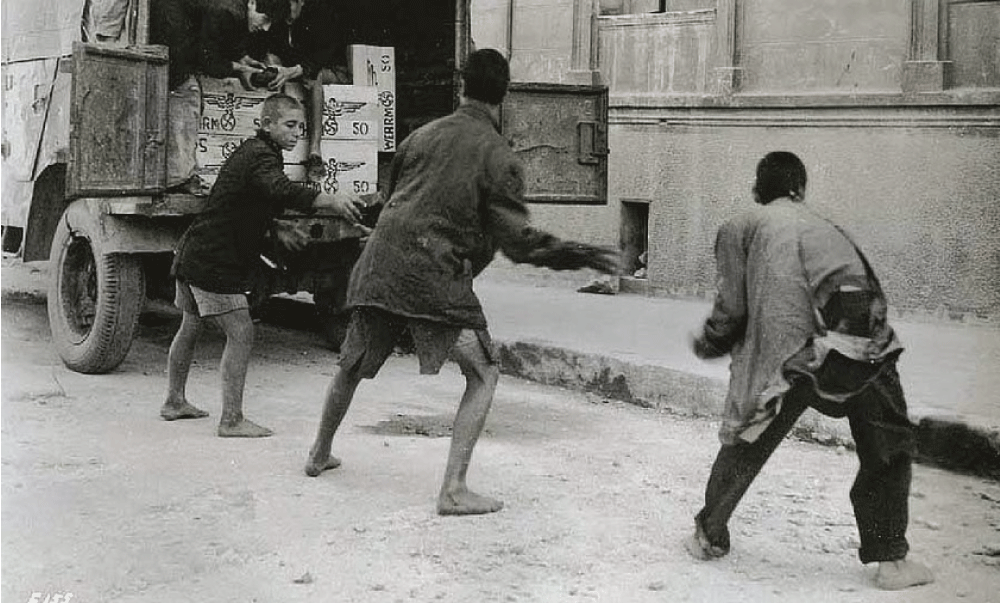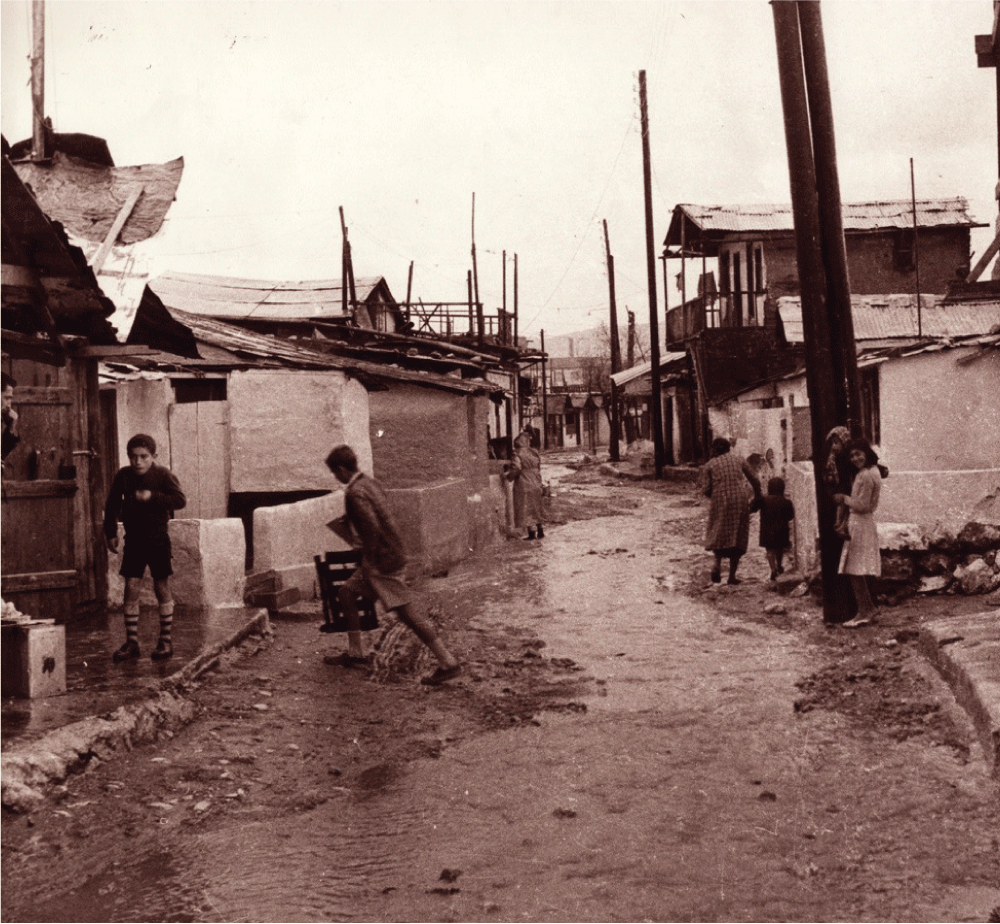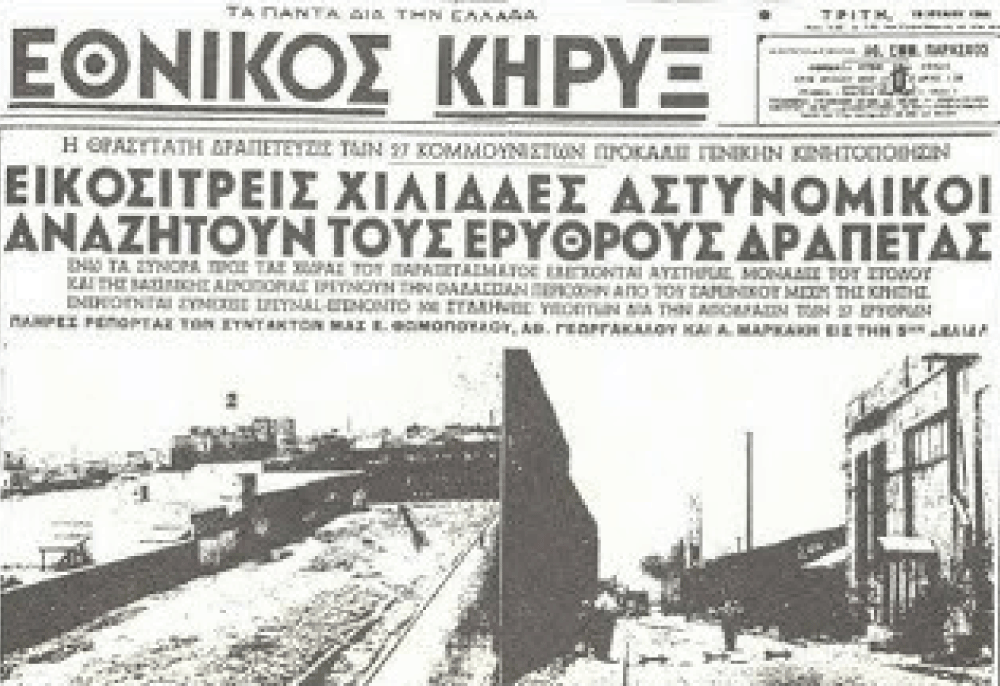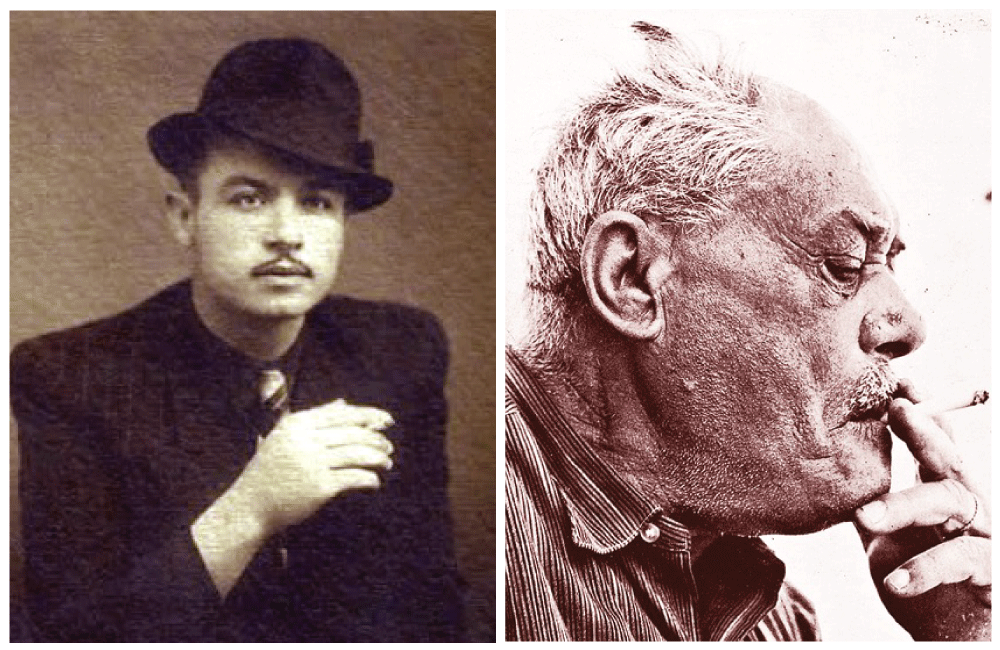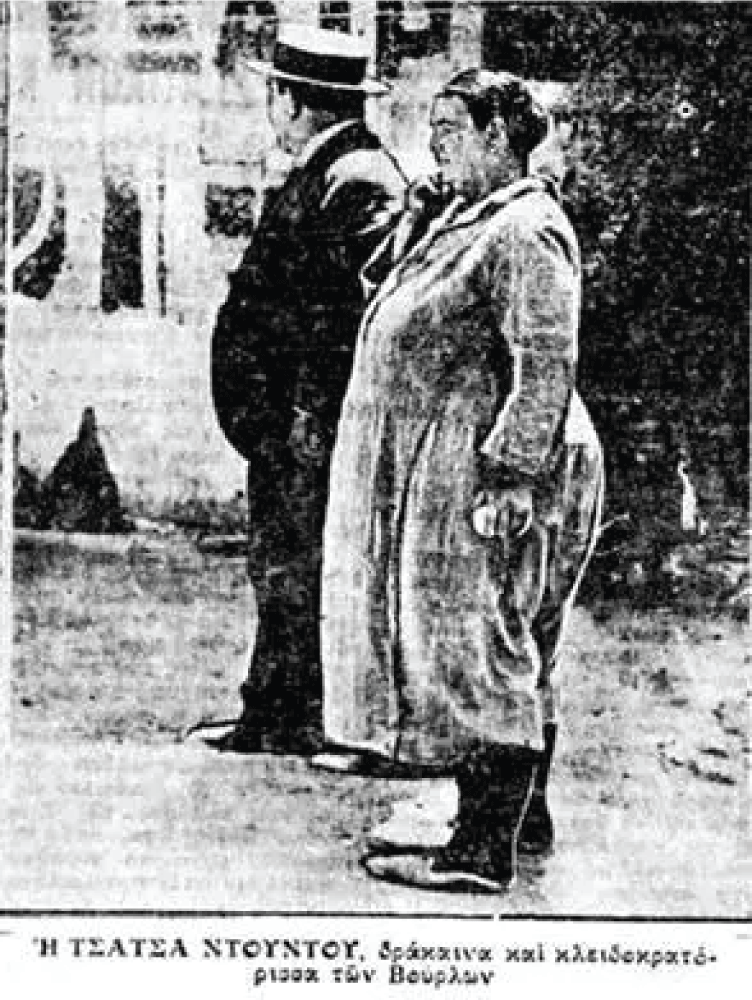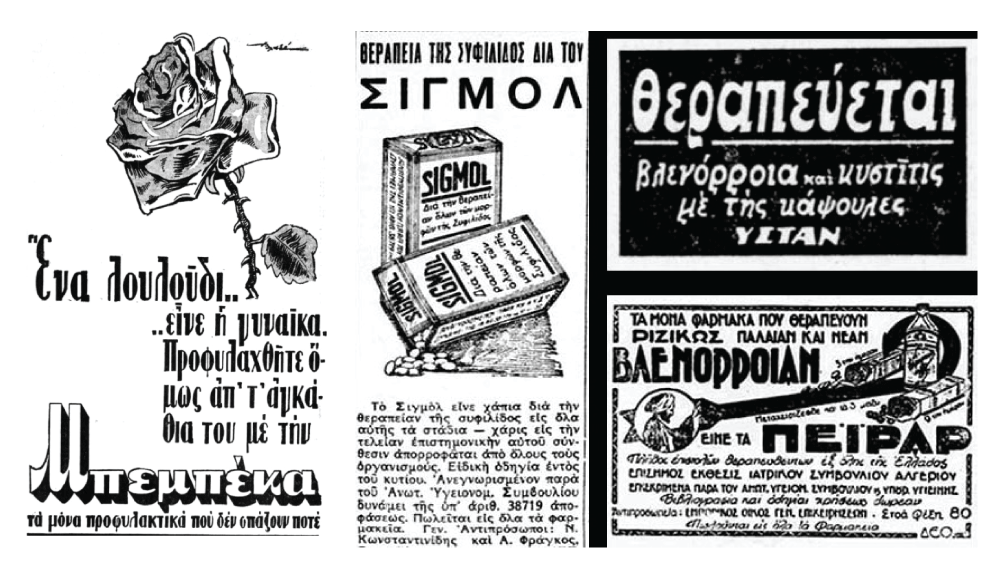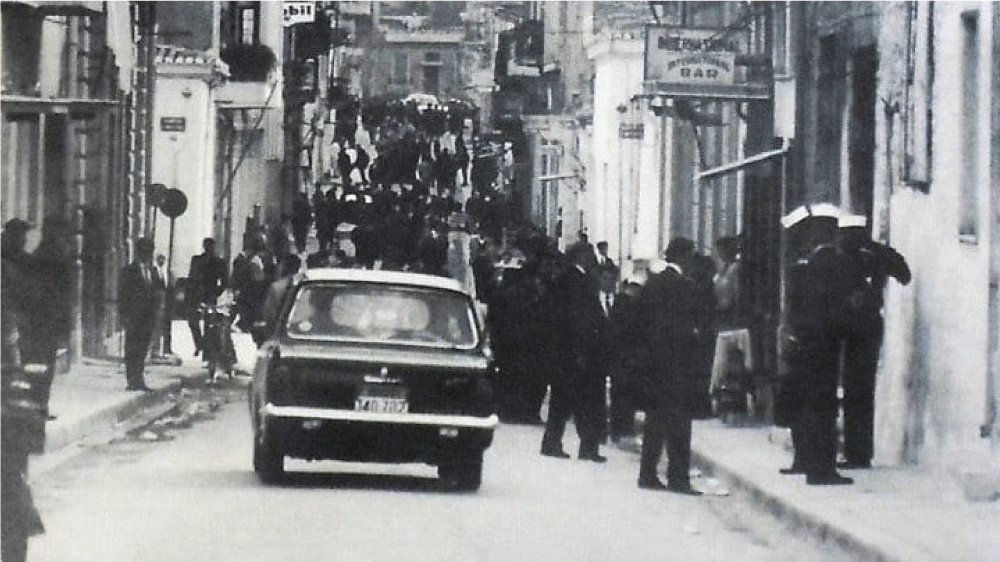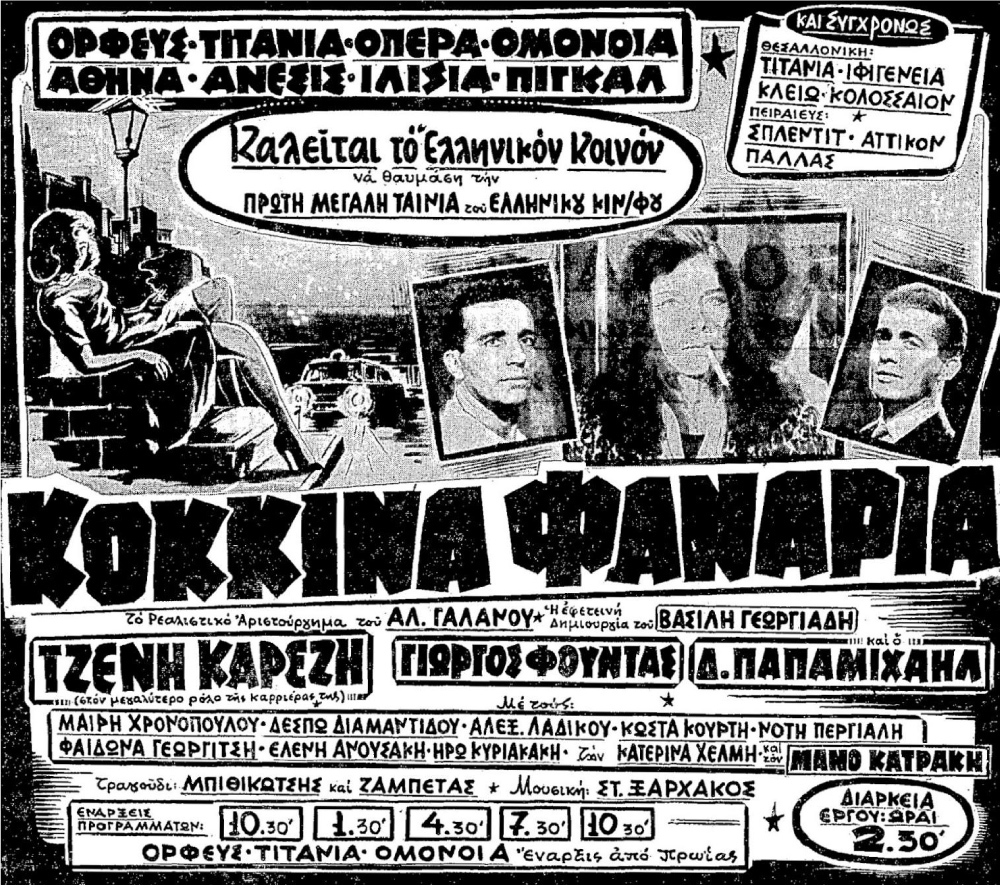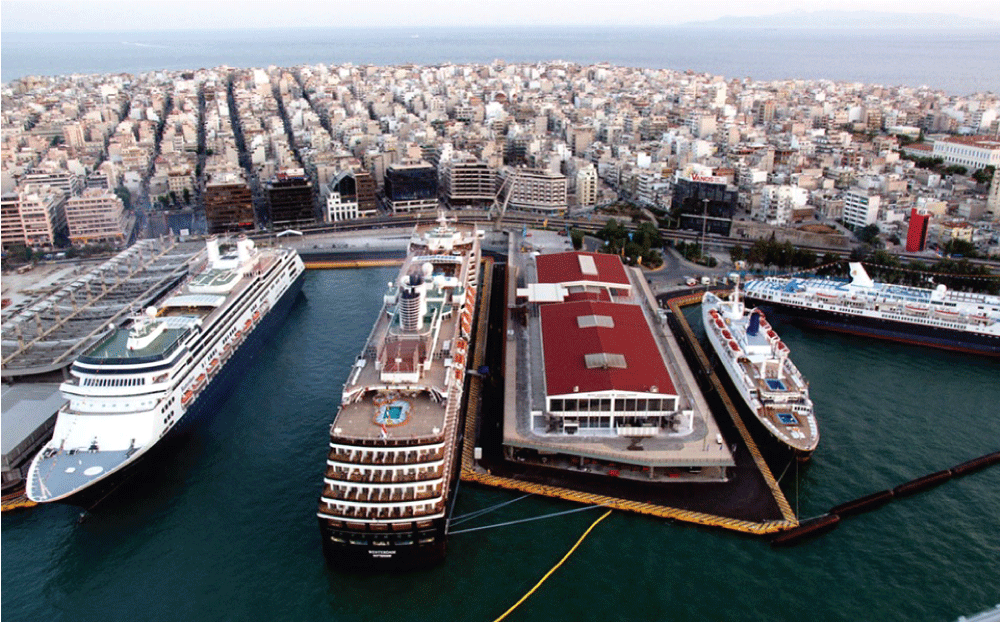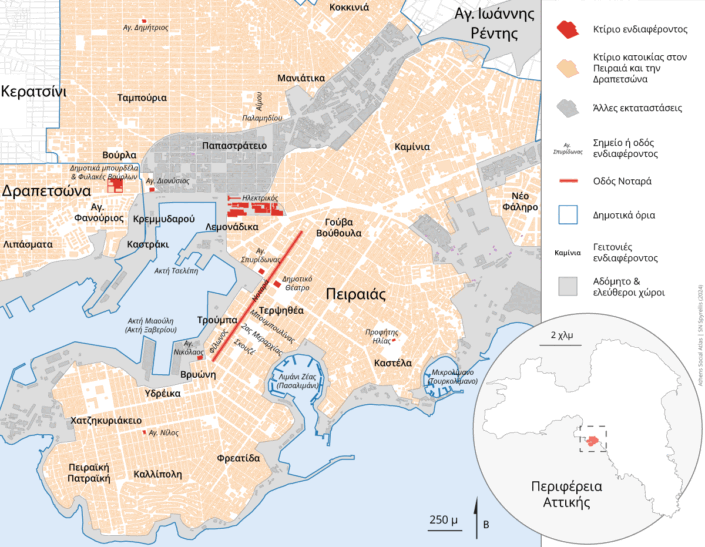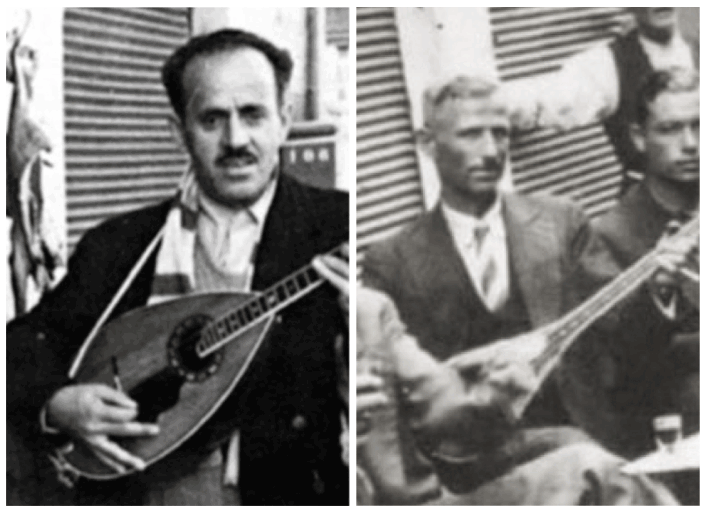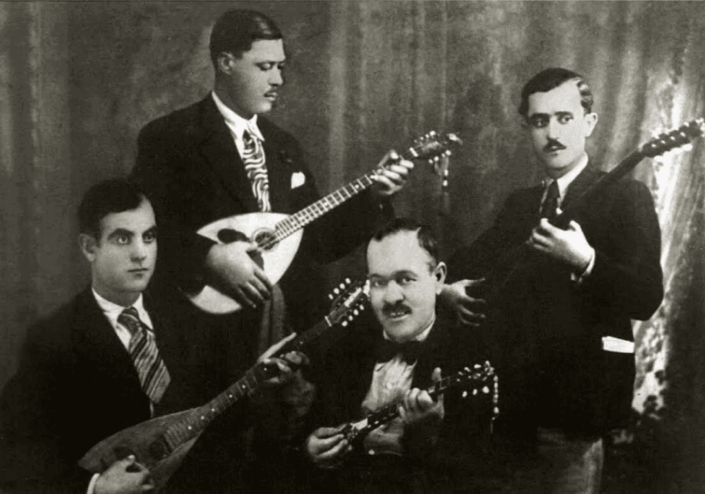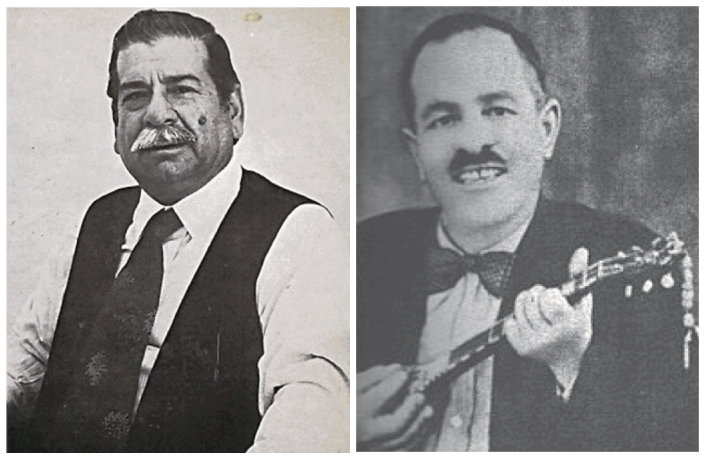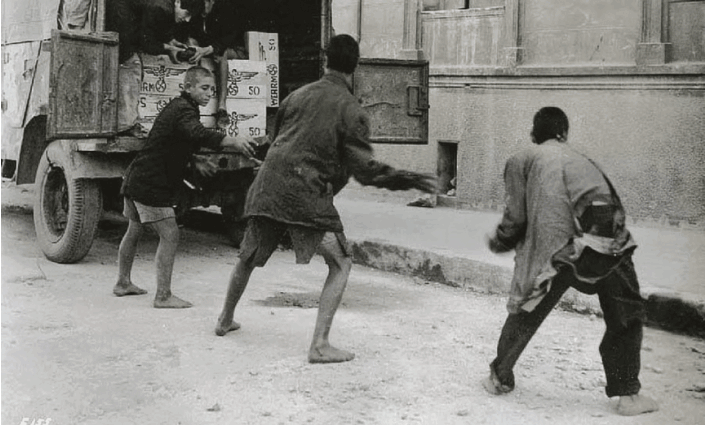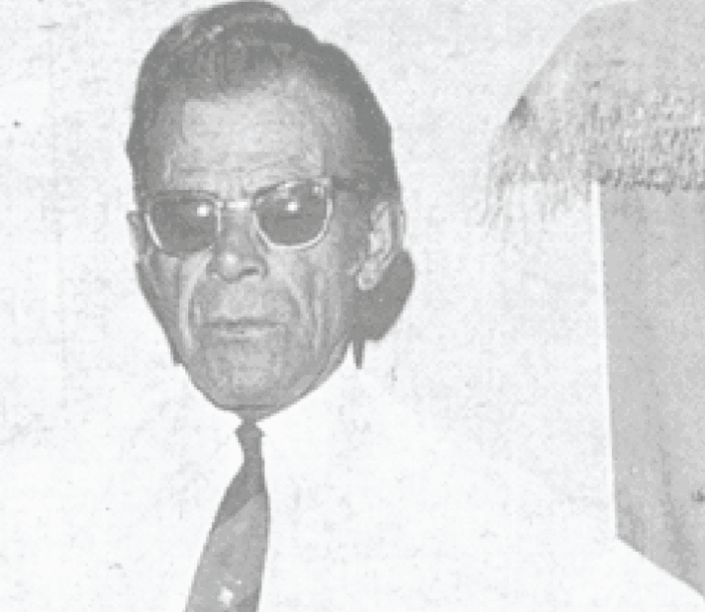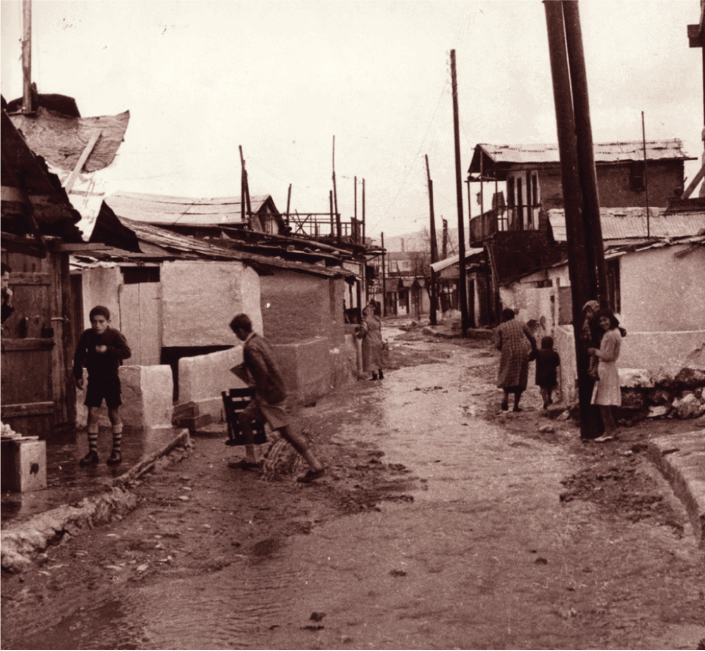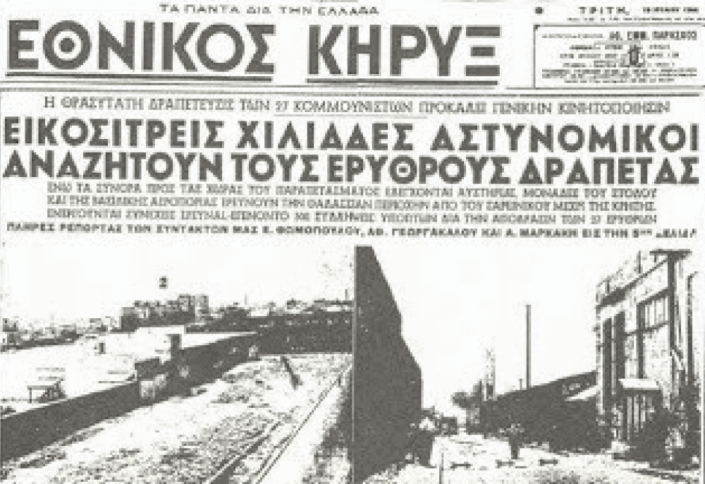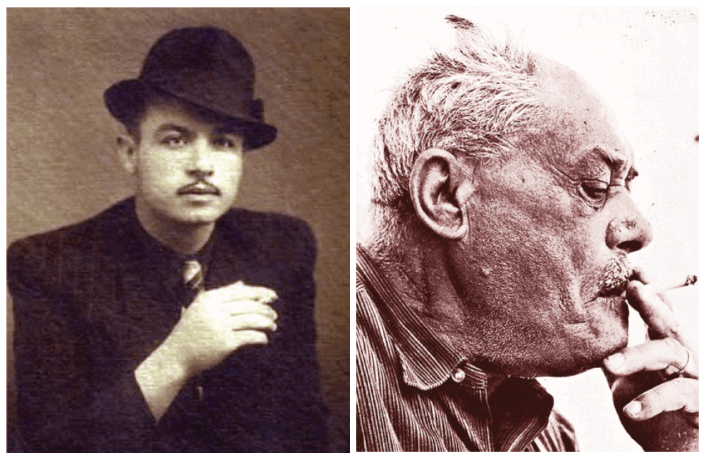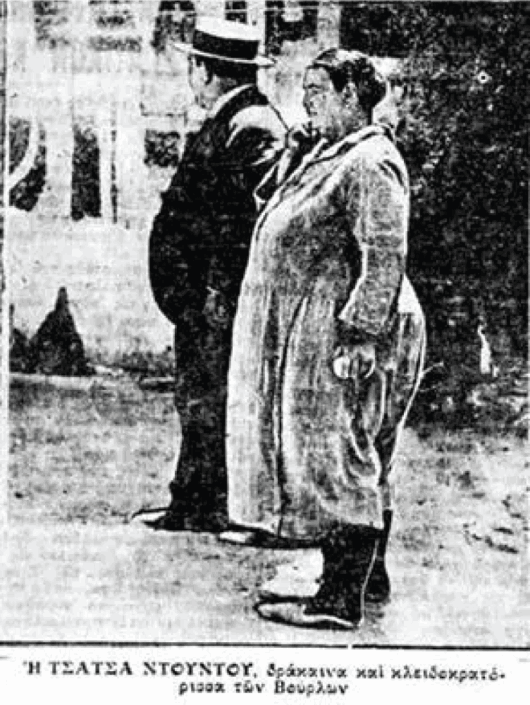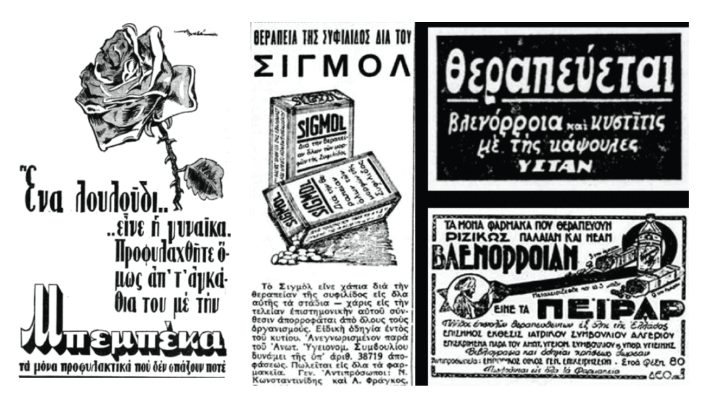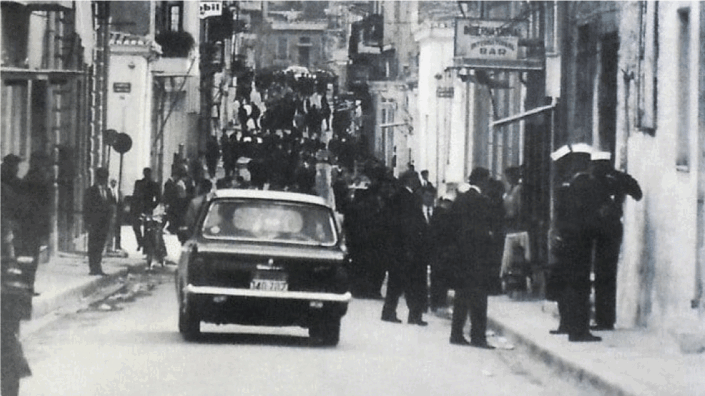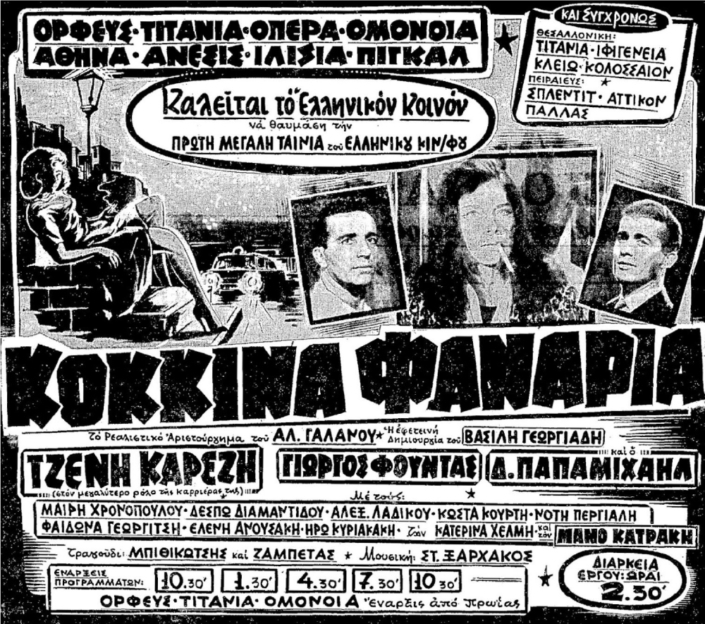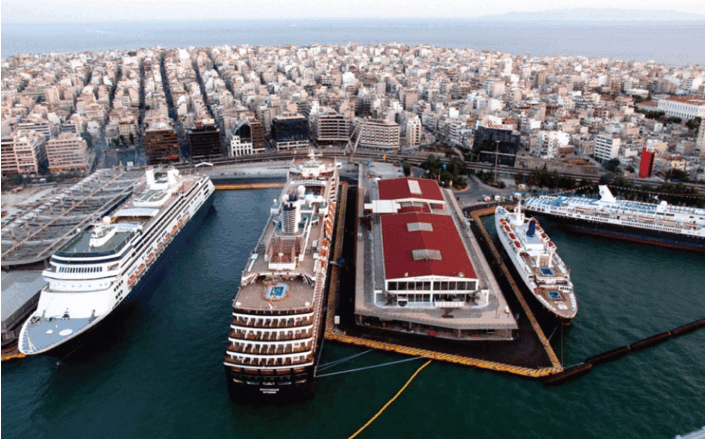2024 | Sep
| Yesterday I dreamed I was flying.
I was flying high, very high, Over the seagulls in Saronikos bay Over old Pireaus I was flying in the present tense. I clearly see the port. All kinds of small boats and liner ships. On the right under me the old customs. Past and present are mixed Like in poems Like in dreams. I see the old clock, the municipal theatre, the train, the barracks. St John’s old graveyard, between the graves, makeshift refugee settlements of 1922. Rugs, tin roofs, car tyres, Cardboards looking like houses, Tenants are used to keep their voice down, They should not wake up the dead. |
Behind the cemetery of Aghios Dionysios, executions were performed in the old times of the regency of Oto, the first King of the Modern Greek state. The first guillotine used in Greece was supposedly a present from Ludwig the 1st of Bavaria, when his son Oto accessed the Greek throne. It seems that the caring father, admiring his era’s new technology, decided to offer his son a useful gift but also a collectable, since this repulsive instrument was probably secondhand.
This collectable did not find its place in the gardens of the Royal Palace, but was sent to Bourgi, in Nafplio (old city in Peloponnesοs, near Mycenae) along with the executioner and his assistant.
The triple execution in Piraeus, watched by a crowd of twenty thousand people, is well known. The three to be executed, Mic Parodis or Angeletos, Nicolaos Leontopoulos or Leontas [Lion] and Manolis Vlachopanayotis or Achladas, were sentenced to death and jailed in Bourgi for piracy and murder. They arrived to the place of execution with the steamboat ‘Evrotas’ (a river in Peloponnesοs), assigned to bring the guillotine and the two headsmen to any place of execution across the country … (‘to be followed on screen’ according to the old ending of film summaries).
Hydraika, Freatida, Terpsithea, Kallipoli, Vryoni, Paliatzidika, Papastratou
I see clearly Miaouli coast, formerly Xaveriou coast. The coal and the toll yards. From Aghios Nicolas to Xaveri, dockers constantly come and go carrying coal. Stratos Payioumtzis with Stellakis Perpiniadis recorded the legendary song Xaveriotissa by Mitsos Gogos, known as Bayaderas. The verses of Bayaderas, born and raised in Chatzikyriakio neighbourhood, mentioned that he “started an evening walk with an old friend towards Chatzikyriakio and Aghios Nilos“.
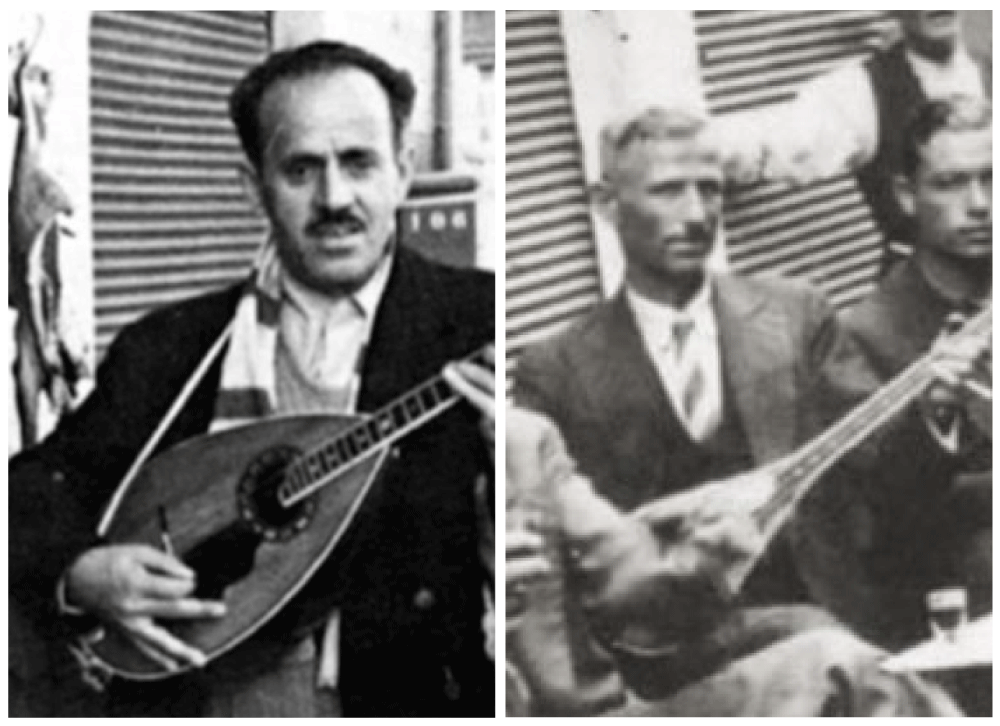 Photos 1 & 2: Dimitris Gogos (aka Bayaderas) on the left, and Yannis Eitziridis (aka Yovan Tsaous) on the right
Photos 1 & 2: Dimitris Gogos (aka Bayaderas) on the left, and Yannis Eitziridis (aka Yovan Tsaous) on the right
Map 1: Piraeus and Drapetsona
Chatzikyriakio, Aghios Nilos, Aghios Vassilios, Aghios Dimitrios, Tambouria, Kokkinia, Kaminia, Mikrolimano, Neo Faliro, Vourla, Lemonadika, Aghia Sophia, Gouva tou Vavoula, Kremudarou, Amphiali, Aspra chomata, Perama, Maniatika.
Legendary quarters, locations, and neighbourhoods of Pireaus, where the first Rebetes [1] tuned their 3-string bouzoukis and their baglamades for the first time in the old doujenia (heydays) [2]. The Anichto, the Karadouzeni, the Syriano, the Arabien. They say that Yannis Eitzeridis, better known as Yovan Tsaous, introduced Vamvakaris to the mysterious primal roads of rebetico’s music, and then the late Markos (Vamvakaris) with Stratos Payoumtzis, Batis and Anestos Delias put together the saint quartet of rebetico, that made history as the “famous foursome of Pireaus”. Hijaz, hitzazkiar, usak, houzam, niaventi, sabah, houseini. On these musical makam [3], roads and in the kutukis (unlicenced drinking pubs) and tekedes (opium dens) of the refugees of the 1920s, one could first hear the songs about the pain of poverty, the misery, the anger, the passion and the dalkas (heartbreak) of love.
Photo 3: The “famous foursome of Pireaus” in full
In 1920, Giorgos Tsoros, known as Batis, opened a dance school, Carmen, and later a café, George Baté, in the Lemonadika neighbourhood, on the Tzelepi coast. The home of this great rebetis was on the crossroad of Aimou and Palamidiou, at the Poplar of Pireaus, facing the house of Michalis Genitsaris.
“I will jump, I will jump, and I will steal their spare tyre’’. This song by Genitsaris, referring to the van draggers (saltadors) during the German occupation, is considered one of the most emblematic ones of the rebetiko community’s resistance.
Photos 4 & 5: Michalis Genitsaris on the left and Giorgos Tsoros (aka Batis) on the right
Photo 6: Young fliers in action (stealing tyres from German trucks during the occupation 1941-1944) from the great film of Greg Tallas, The barefoot brigade (1953)
At the Vavoula’s gouva
Ιn his book The miserables of Athens (1894) [4], Kondylakis mentions Vavoula’s gouva (sunken area)[5].
| In Vavoula’s gouva, I have prepared/incited a young girl And we meet every night in the cool and the dark |
Stelios Keromytis (aka Boubis), the “bourgeois” rebetis sung for the neighbourhood he grew up:
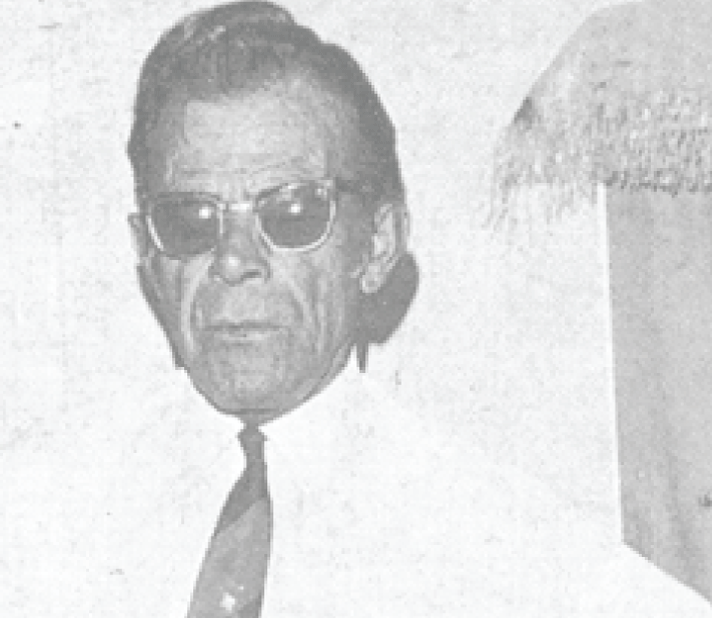
Photo 7: Stelios Keromytis (aka Boubis)
At Lemonadika
| “Down at Lemonadika there was trouble” |
It comes from the well-known dance song (Aptaliko zeibekiko) [6] “E Lahanades” (The cabbagers) by Vagelis Papazoglou that circulated in different versions in the early 1930s (Katina Homatianou, Stellakis Perpiniadis, Kostas Roukounas and others).
Lemonadika (area of lemons) was the name of the old fruit and vegetable market of Piraeus in Karaiskaki square until the 1950s.
At Drapetsona, Kremydarou, Kastraki and Aghios Fanourios
The legendary area of Drapetsona comprised neighbourhoods like Kremydarou, Kastraki, Aghios Fanourios etc. The heartbreaking verses by Tassos Livaditis inspired Mikis Theodorakis to compose the famous zeibekiko song “Drapetsona”, a landmark in the history of art popular music.
Photo 8: Drapetsona or Kremydarou
At Vourla
Vourla is another historical location on the border of the eastern side of Drapetsona and the municipality of Keratsini, next to the church of Aghios Dionysios. A marshy place with its name coming from the rushes that grew up in the area, well-known for the brothel-military barracks functioning between 1876 and 1941, as well as for the escape of 27 communist prisoners in the summer of 1955 that sounds like a fairytale, when Vourla operated as high-security prison under the name of “Judicial Prison of Piraeus”.
Photo 9: Newspaper first page (Ethnikos Kyrix, July 19, 1955) mentioning that 23.000 policemen are looking for the 27 fugitives
Ilias Petropoulos (2010) writes about Vourla in their early period:
| “In the beginning of this century Piraeus ended in the cemetery of Aghios Dionysios, next to Vourla and to Vromolimni. Vourla (true to its name) were in a deserted and marshy landscape.
Vourla comprised three two-floor buildings in a Π shape. Each side had 24 rooms (12+12), thus 72 rooms in total = 72 prostitutes. The Π shape was closed by an outside wall, and in the middle of the yard was a small house: in the ground floor was the café of the pimps and on the upper floor were the police quarters” |
In the autobiography of Michalis Yenitsaris (1992) we read about Vourla:
| “The truck came in trough the big and iron door and the yard could contain a hundred cars. As you entered on the right corner was the Morality police unit with many policemen inside. There were 150 prostitutes and the ‘lovers’ could not be restrained. Police force was needed since quarrels and killings often happened.” |
Nikos Mathesis mentions (Χατζηδουλής, 2000):
| “Drapetsona was one of the main whereabouts of machos, with the tekedes (opium dens) and the brothels in Vourla frequented by all sorts of people.
Vourla had 500 prostitutes and gathered all the guys of this sort. Barracks, tekedes, drug dealing at its peak, brothels, ‘lovers’, thugs, smugglers, machos, bullies, swingers, junkies, stoners, cutthroats, leftover machos” |
Mathesis was a great songwriter, but also a big macho and a bully. His fight with Vamvakaris is well known, and it ended up, after a quarrel, by his ticking two forks to Marco’s (Vamvakaris) buttocks. The opinion of Vamvakaris about Mathesis can be found in his memoires (Βέλλιου-Κάιλ, 1978):
| “Just don’t mention this Mathesis. Scum. Leave him aside. I don’t even want to see him. He was not nice to me. He had a lover, I find out later she was at the brothels at Vourla, who came from Crete. She loved me very much. It was me that she wanted, not him. And I wrote a song for her:
Black eyes, black eyebrows, black curly hair White face like a lily and a beauty spot on the cheek”
|
Photo 10 & 11: Nikos Mathesis (aka Madman) on the left and Markos Vamvakaris on the right
With the closing down of this temple of love, the poor prostitutes were forced to seek other places. The unluckiest ones were dispersed and performed their art outdoors as kalderimitzoudes [7] (εξήγηση ετυμολογίας από καλντερίμι). The luckiest ones were upgraded to tsatsades (madams) working in houses and others were promoted and even got the title of Mama.
The stories about Vourla are endless.
One can get testimonies for this matter from writers and journalists of that period, like Manolis Kanelis and Lilika Nakou (well known for her feminist activity, unprecedented during that period) who describe their personal experiences and their direct relation with the sad heroes of the tragic happenings in that place.
The two-volume study by Spyros Papaioannou and Kostas Vlissidis, under the title “the horrible temple of sin”, is particularly interesting, as well as the exciting book by Vassilis Pamissis “Trouba, Vourla, Port”, comprising a lot of testimonies by people who closed lived with the people and what was going on in these places.
Photo 12: Chief Madam Doudou, the terrible dragonesse of Vourla
Newspaper publicity for treatment from venereal diseases
Photo 13: Newspaper publicity for condoms and treatment for venereal diseases
At Trouba
In the mid-50s, the nightlife of Piraeus started moving to other joints and changed forms of entertainment. The area of Trouba became the leading place in the early 1960s. Its name is related to the antagonism of the port’s maritime agents who competed to get a place on the dock with a special water pump (trompa) to supply ‘their’ ship.
The area was enclosed between the churches Aghios Spyridonas and Aghios Nikolaos. Within Troumba, the streets of 2nd Merarchia (military division), Bouboulinas, Skouze and, mainly, the parallels and famous Filonos and Notara, full of hotels serving hired love, disreputable houses and attractive leisure venues with plenty of whisky and girls keeping company to the usual clients.
Photo 14: The Trouba neighbourghood
The Greek cinema of the early post-war period tried to depict this particular ambiance of Troumba, mainly with dramatic films, sometimes successful and sometimes not.
Some film titles: The girl of sin (1958) – Life’s shipwreck (1959) – Never on Sunday (1960) – I killed my child (1962) – The street with the red lights (1963) – The red lanterns (1963) – The scumbag (1963) – Lola (1964) – Welcome, dolllar (1967) – Trouba 67 (1967) – The (American) military camps (vassis) and Vassoula (1975)
Photo 15: Newspaper publicity in 1963 for the film Red lanterns (Vassilis Georgiadis, 1963) with the portraits of the major actors: Karezi, Foundas and Papamichail
The sound of bouzouki and baglama stopped and was replaced by the rhythms of swing and the sound Latin American tunes listened by the girls in the houses of Notara street, since every early afternoon they came from the cabarets of Filonos street and were used as pullers for the numerous potential clients, mainly sailors of the 6th American fleet. The renown cabarets were “Black Cat”, “Shanghai”, “Mocambo”, “Puerto Rico”, “Milano”, “45 Yankees”, “Liberty bar”, “Kit Cat”, “Argentina”, “John Bull”.
It is worth mentioning Giorgos Veizades, co-owner then of “John Bull”. The older ones remember that this guy with his wife, Mme Antigoni Veizade, burned the body of a 12 year old girl, Spyridoula Rapti, who provided domestic work for them, so that she confessed steeling 50 dollars. (Besides, and according to a publication in a newspaper of the city of Agrinio, Antigoni Veizade was collaborating with the SS during the German occupation) They served the small sentence imposed by the court (4,5 and 5 years respectively), they were released and soon they died.
Faces and images from another era, images sometimes bright and sometimes dark, images belonging to another story with leading figures of all sorts, ordinary or special, who left a clear print until today. Time went on and, as it was expected, Piraeus could not escape the blizzard of gentrification. Its reshuffling started with mayor Skylitsis, collaborator with the dictatorial regime of 1967-1974 and following the dogma “fatherland, religion, family”, who destroyed –in real and metaphoric terms– everything that could remind the wicked past of such a special and unique city. This purification started on September 12, 1967 with the closure of all brothels that lead 500 girls to be thrown to the street.
Unrecorded song by Bayanderas (Χατζηδουλής, 2000):
| Troumba is now a desert
without the pretending strong guys The bullies dispersed and the friends disappeared. |
Today the big cruisers, reminding abominable apartment blocks, drop their anchors every day and empty their living cargo that will leave the coveted currency to the city
Today’s Piraeus
The wind fed by the breeze of Saronic gulf passes, however, between the tall buildings hosting the commercial marine offices and continues to cool us and bring to our ears an old familiar melody. Paying some attention, the verses can be heard. It is Mitsakis’s famous song.
Photo 16: Image of today’s Piraeus
| From Tzelepi’s coast to Karaiskaki stadiumI took walks in the evening when I was a sailor
A child from Piraeus myself In the sea and on the land I was born and grew up in Terpsithea And studied engineering here in Promitheas (vocational school) My Piraeus, my Piraeus with your Saronic gulf And Olympiakos (local football club) as your pride |
[1] There are many contradictory references concerning the etymology of this word. On the other hand, there are converging definitions of the term. Rebetis signifies the wandering, tough, uncompromising, insubordinate, a person on the margin, with his own honour codes and moral values
[2] The term Doujenia refers to the specific way of cording the boujouki instrument, so that the performing musician is enabled playing according to the way he/she chooses
[3] The popular roads (modes) are close to the ancient Pythagorian musical ways (Dorian, Ionic, Frygian, Lydian etc.) as well as to the Byzantine sounds (Plagios, Protos, Plagios Defteros etc.).
[4] The first Greek illustrated novel by Ioannis Kondylakis (Ιωάννης Κονδυλάκης, 1861-1920) Οι άθλιοι των Αθηνών, το πρώτο (Κονδυλάκης, 1894). First edition accessible at: https://anemi.lib.uoc.gr/metadata/5/c/a/metadata-8a030266a7f8abae3b3f22cbcf49cc53_1269333260.tkl)
[5]Vavoulas’s Gouva, known also as “Lakka”, an old neighbourhood of Piraeus in decline, is close to the city centre, facing the “Keranis” tobacco industry. The terms gouva and lakka denote the morphology of the territory (basin) and its almost zero altitude from sea level.
[6] Vavoulas’s Gouva, known also as “Lakka”, an old neighbourhood of Piraeus in decline, is close to the city centre, facing the “Keranis” tobacco industry. The terms gouva and lakka denote the morphology of the territory (basin) and its almost zero altitude from sea level.
[7] Κalderimitzoudes refers to sew workers on the streets, Kalderim in Turkish, and kalderimi in Greek, being the paved street
Entry citation
Gyzelis, K. (2024) Notara street ballad, in Maloutas T., Spyrellis S. (eds) Athens Social Atlas. Digital compendium of texts and visual material. URL: https://www.athenssocialatlas.gr/en/article/ippokratous-street/ , DOI: 10.17902/20971.125
Atlas citation
Maloutas T., Spyrellis S. (eds) (2015) Athens Social Atlas. Digital compendium of texts and visual material. URL: https://www.athenssocialatlas.gr/en/ , DOI: 10.17902/20971.9
References
- Βέλλιου-Κάιλ Α (1978) Αυτοβιογραφία Βαμβακάρη, Αθήνα, Παπαζήσης
- Γενίτσαρης Μ (1992) Μάγκας από μικράκi, Αθήνα, Δωδώνη
- Κονδυλάκης Ι (1894) Οι άθλιοι των Αθηνών, Αθήνα, Π. Ζανουδάκης
- Πετρόπουλος Η (2010) Το μπουρδέλο, Αθήνα, Νεφέλη
- Χατζηδουλής Κ (επιμ.) (2000) Ρεμπέτικη ιστορία 1. Περπινιάδης, Γενίτσαρης, Μάθεσης, Λελάκης, Αθήνα, Νεφέλη

